Invented by Sean Christopher Laughery, Bryan Christian Mohney, Burton Connor Judson, Daniel Scott Gunnett, Stryker Corp
The wireless charging system for a battery in a medical device has been designed to provide a safe and reliable way to charge medical devices. The system uses electromagnetic induction to transfer power from a charging pad to the battery in the medical device. This technology has been proven to be safe and effective, and it has been widely adopted by medical device manufacturers.
The market for wireless charging systems in medical devices is expected to grow at a rapid pace in the coming years. This growth is driven by the increasing demand for medical devices that are more convenient and efficient to use. The wireless charging system for a battery in a medical device has been a major contributor to this growth, and it is expected to continue to be a key driver of the market in the future.
The wireless charging system for a battery in a medical device has many advantages over traditional charging methods. It eliminates the need for wires or cables, which reduces the risk of tripping or entanglement. It also reduces the risk of electrical shock, which is a major concern in healthcare settings. Additionally, the wireless charging system is more efficient than traditional charging methods, which can save time and money.
The market for wireless charging systems in medical devices is highly competitive, with many companies vying for market share. Some of the key players in the market include Medtronic, Abbott Laboratories, Boston Scientific, and St. Jude Medical. These companies are investing heavily in research and development to improve the technology and make it more affordable and accessible to healthcare providers.
In conclusion, the market for wireless charging systems in medical devices is growing rapidly, and the invention of a wireless charging system for a battery in a medical device has been a major contributor to this growth. This technology has made medical devices more convenient and efficient to use, and it has the potential to revolutionize the healthcare industry. As the market continues to grow, we can expect to see more innovations and advancements in this field, which will benefit patients and healthcare providers alike.
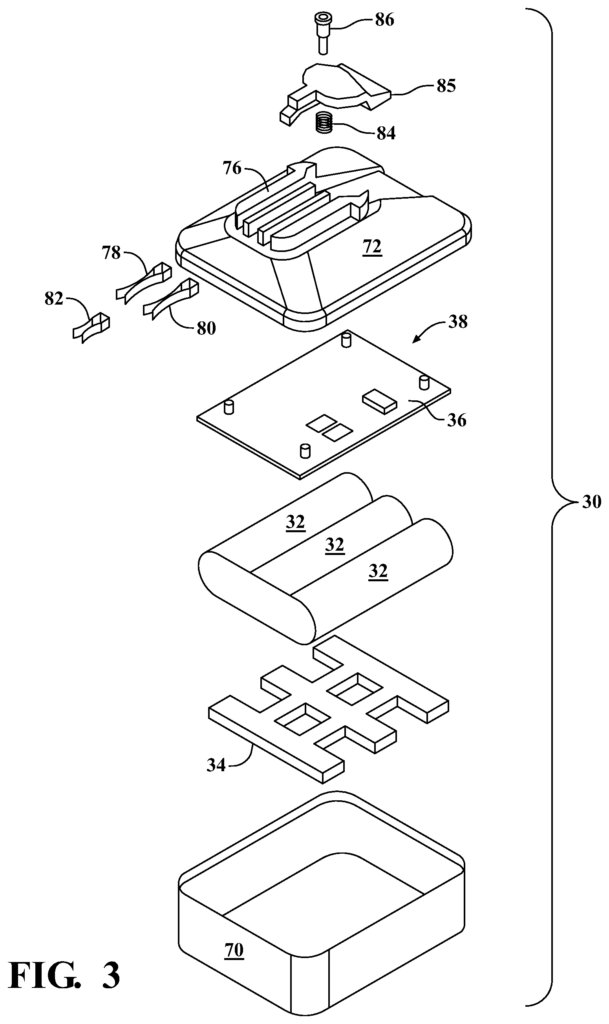
The Stryker Corp invention works as follows
A system comprises a battery with a controller, and a container that includes multiple receptacles. Each receptacle is shaped to accept the battery. The system includes a charger device with a plurality charging bays. Each charging bay is designed to fit a particular receptacle from the plurality. Each charging bay comprises a first transmitter configured to charge the battery and a second transmitter configured to communicate with a battery controller. The charger controller can detect the presence of a battery in a receptacle that is associated with a charge bay. It will then pair the battery with the charging device using the second antenna, while deactivating the first.
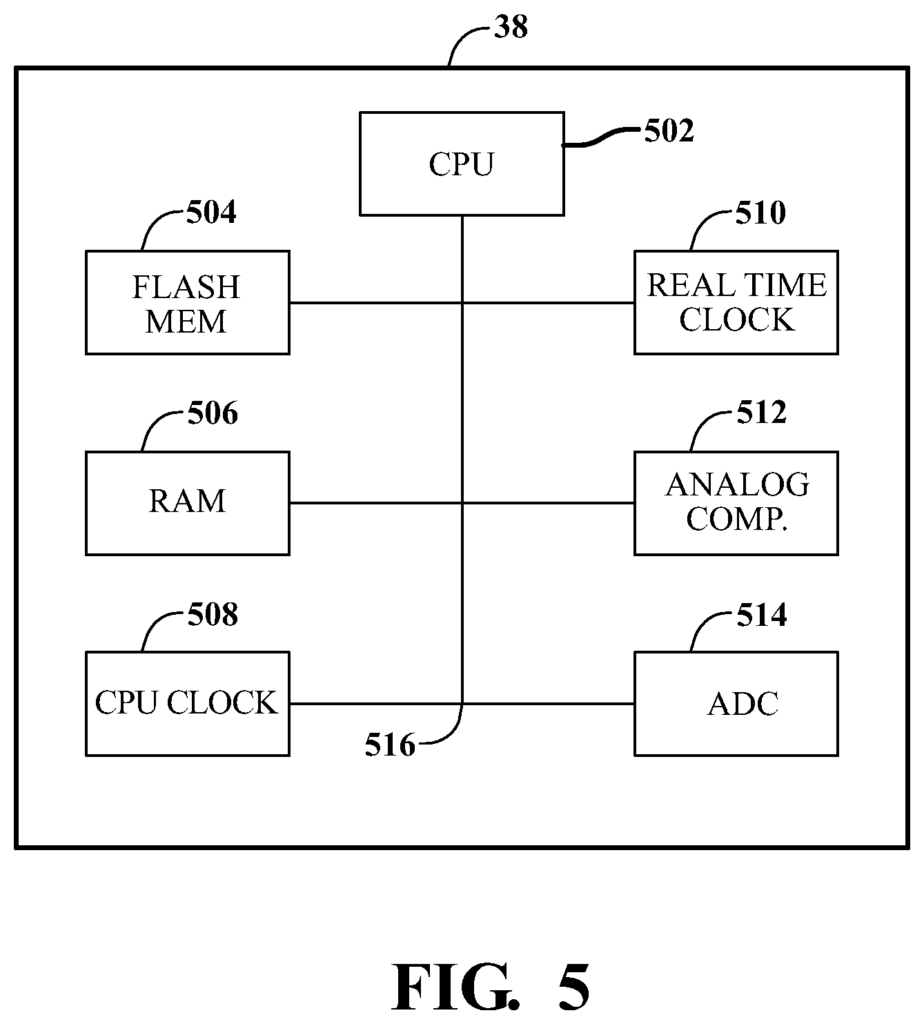
Background for The invention relates to a wireless charging system for a battery in a medical device.
Rechargeable batteries and non-rechargeable ones are referred to as primary batteries. A secondary battery can be charged repeatedly, store the charge, and deliver the charge to medical devices, such as surgical tools, to which it is attached. Over the years, secondary batteries have evolved into reliable sources of power for powered surgical instruments used in operating rooms. By using a battery, you can eliminate the need for a power cable connected to an external source of power. This eliminates the need for a power cord, which is a benefit over corded tools. This type of tool eliminates the need for surgical personnel to sterilize a cord before bringing it into the sterile field around the patient. The cord is also removed, removing the clutter and obstruction to the surgical field that the cord would otherwise bring.
Batteries used in surgical instruments are subjected to harsh environmental conditions that are not common for batteries used for other purposes. A medical battery, for example, may be exposed during a surgery to blood or another body fluid. The battery may become contaminated with tissue removed from the patient. Sterilizing the battery between medical procedures is a must to eliminate the risk that patients will be infected. Batteries can either be sterilizable or non-sterile, but they must be housed in a sterilizable container. In the example of sterilizable batteries, the cleaning/sterilization process typically involves rinsing the battery to remove contaminants that are readily visible on the surface of the battery. These events can cause a conductive layer to form on the contacts of the battery. This oxide layer acts as an impedance that reduces both the efficiency of charging the battery, and the efficiency with which the battery delivers charge to the tool it is connected to.
The batteries can also be immersed in a chamber filled with steam as part of the autoclaving procedure. Specialized batteries are required to withstand the high temperatures of the autoclave. Autoclave temperatures can often exceed 130 degrees centigrade. Batteries that are specially designed to withstand high autoclave temperatures can still be damaged during the autoclave (though less than with batteries in other environments). Batteries used in medical environments, which are autoclaved, may suffer more damage.
Batteries may also gradually lose their charge if they are not used for a long time before they are connected to a surgical instrument for use during a procedure. A battery that was initially fully charged may lose its charge over time while being stored and not be at the required level when it is needed. The health care professionals that use surgical tools, and the associated batteries, need to feel confident that the batteries have the necessary level of charge to be used during a surgery or in another potentially critical situation.
In one embodiment, it is disclosed a charging system for a battery. The system comprises one or more batteries. Each battery has a battery control. The system includes a container with multiple receptacles aligned to each corresponding receptacle. The system also includes a charging unit, which has a plurality charging bays. Each charging bay is configured to receive a protrusion from the container, and each bay includes both a first and second antenna. The first antenna establishes communication with the battery controller of a container battery that is disposed in a receptacle. The second antenna provides charging power to the battery in the receptacle. The charging device includes a controller that is configured to detect if the first antenna established communication with a battery when the battery was within proximity to the charging bay, and then provide charging power via the second antenna if the first antenna had established communication.
In another embodiment, the method for operating a charging system is disclosed. The system comprises one or more batteries. Each battery includes a controller, and the container has a plurality receptacles that are shaped to accept a battery. A plurality protrusions align with each receptacle. A charging device is also included in the system. It includes a controller for charging and one or several charging bays that are shaped to accept a protrusion. Each charging bay has a first and second antenna. The method involves placing a battery in a receptacle from the plurality receptacles, placing the container on the charging device so that the protrusion of the receptacle corresponds to a bay of the multiple bays. The method includes also communicating with the controller of the battery that is disposed in a receptacle within the container when the battery is within proximity of the bay of charging with the first transmitter and detecting the communication between the battery and the charger controller with the first transmitter. The method includes also providing charging power to battery in the receptacle upon detecting that first antenna has established communications with battery with second antenna.
In another embodiment, the system is disclosed for charging a cell. The system comprises a battery that includes a controller battery and a passive communications device connected to the controller battery. The system includes a sterile enclosure for the battery, a charger including a charging bay with a controller and a charging apparatus. The charging bay has a first antenna that is configured to energize a passive communication device on the battery, and establish communication with the controller of the battery via the energized device. The charging bay includes a second device that provides charging power for the battery. The charging controller controls the first antenna in order to energize the passive communications device of the battery, and establish communication with battery controller using the energized passive communications device. The charging controller can also activate the second transmitter after the first antenna has established communication with the controller, and supply charging power to the batteries via the second transmitter.
In another embodiment, the method for operating a charging system is disclosed. The system comprises a battery that includes a controller battery and a device for communication coupled to it. The system includes a sterile enclosure for the battery, a charger with a controller and charging bay and a charging apparatus. The charging bay has a first and second antenna. The method comprises encasing a battery with a sterile shield and placing it on the charging device. The method includes also energizing communication device of battery with first antenna, and communicating with battery controller through the energized communication devices with first antenna. “The method also includes activating the charging controller’s second antenna after the first antenna has established communication with the controller, and providing power to the battery via the second antenna.
In another embodiment, it is disclosed a charging system for a battery. The system comprises one or more batteries. Each battery includes a battery control. The system includes one of more sterile walls for encasing one or multiple batteries. Each battery is enclosed in one of these sterile walls. The system includes a charger with one or more bays. Each bay has a first and second antenna. The first antenna establishes communication with the battery controller when the battery is in close proximity to the charging bay. The second antenna provides charging power to the battery enclosed in the sterile barriers. The charging device includes a controller that detects whether the first battery has established contact with it when the battery is in close proximity to the charging bay. It then provides charging power via the second antenna if the first antenna does establish communication.
In another embodiment, it is described a charging system for a battery. The system comprises a battery with a passive communications device and a controller connected to the passive communication devices, where the controller is configured to put the battery into a low power state. The system includes a container that comprises a receptacle configured to receive the batteries and a protrusion aligned with said receptacle. The system also includes a charger having a charging bay that is shaped to accept the protrusion, and a controller. The charging bay has one antenna that is configured to energize a passive communication device on the battery and establish communication with the controller using the energized communication device. It also provides charging power to the batteries. The charging controller controls the antenna in order to energize and energize the passive communications device of the batteries, as well as to establish communication via the energized communication devices with the battery controller. This allows the battery controller to cause the battery to exit low-power mode upon the establishment of communication. The charging controller can also receive authentication data in order to authenticate battery in response to battery controller exiting low-power mode.
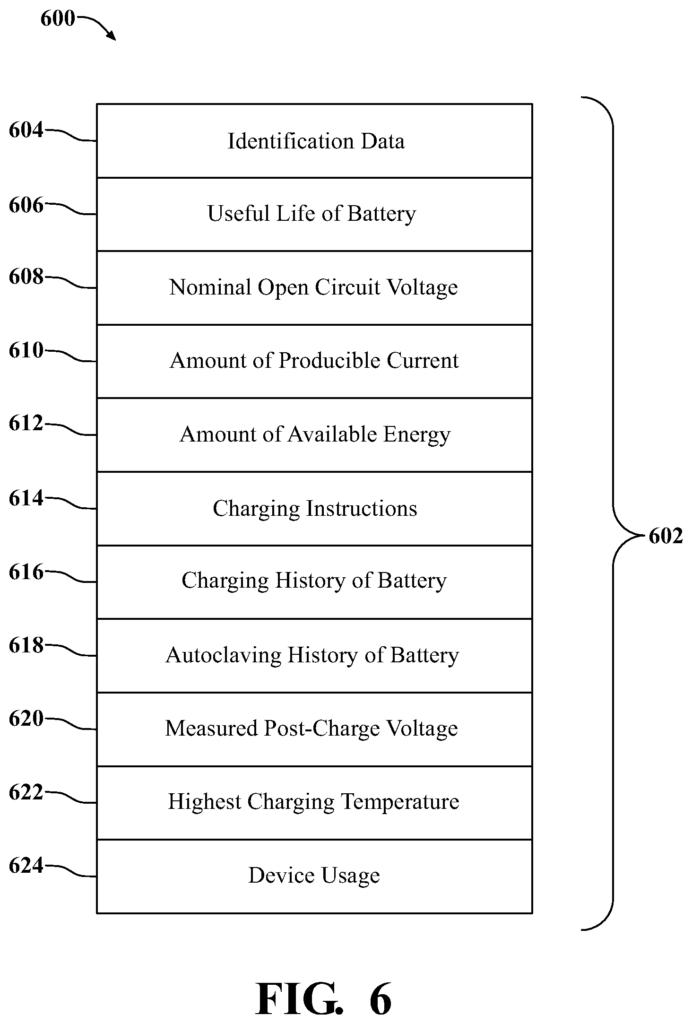
In another embodiment, it is disclosed a system to charge a battery. The system comprises a first and second container. The first and second container each have a number of protrusions and a number of batteries, with each protrusion aligned to a corresponding receptacle. The system includes a charger with a plurality charging bays. Each charging bay is designed to accept a protrusion from the first or second container. Each charging bay has an antenna that is configured to supply charging power to a battery in a receptacle. The charging device includes a controller that is configured to deliver charging power via the antenna to the battery in the receptacle.
In order to give a complete understanding of the invention, many specific details will be provided in the following description. One with ordinary skill in this art will understand that it is not necessary to use the specific detail to practice the invention. Other times, well-known methods or materials have not been described to the detail necessary in order to prevent obscuring of the present invention.
This specification refers to a single embodiment, an embodiment, or a single example throughout.” or ?an example? This means that the feature, structure, or characteristic described with respect to the embodiment of an example is present in at least one of the embodiments of the invention. The phrases “in an embodiment”, “in one example”, and so on are all used to describe the same thing. or ?an example? In this specification, the terms “an example” or “an embodiment” are used in different places. They do not all refer to the same thing. In addition, features, structures, or characteristics can be combined into any combination and/or subcombination in one or several embodiments or example. It is also understood that the figures are provided for the purpose of explanation to those who are normally skilled in the field and that they are not necessarily drawn at scale.
The present disclosure describes a battery that can be charged wirelessly by a module with at least one charging bay. The battery can be sterilized, and then placed into a battery container capable of sterilization and maintaining a sterile condition of the volume within. The battery container acts as a barrier, ensuring that the contents of the container remain sterile until it is opened. The battery container can then be transported to a charging module, and the battery can be charged in the sterile volume. While the battery is in the sterile container, the battery can communicate with the module. The battery may be in low power while it is transported to the module.
When the battery is in close proximity to the charging port, the communication antenna that is associated with it generates an electromagnetic wave which is used to communicate to a battery communication unit. The charging bay also has a power antenna that can be disabled when communication antennas are enabled. In one embodiment, a battery communication device comprises a near field communication (NFC tag) with an integrated antenna. In other embodiments other tags, such as RFID tags, or other circuits that are coupled with an antenna can be used. The battery communication device is brought out of the low-power state and paired with the charging module when the antenna is energized. In one embodiment, the battery controller, the charging circuit and other components may leave the low-power state when the tag is powered up or when the battery pairs with the charging module.
The tag will provide battery data to the charging module, including battery health and charge state. The charging module can display the battery data in one or more indicators such as a display area on the module. The charging module can also receive battery operation data from the tag.
The charging module can determine if the battery is charged by sending a request to it. The charging module starts the charging process if the battery replies to the request by sending a message that indicates it is ready to be charged.
The charging module can start the charging process by disabling communication antennas and activating the power antenna of charging bays associated with batteries. The power antenna produces an electromagnetic field which inductively couples with a corresponding battery antenna. The charger antenna then provides charging power to the battery antenna in order to charge the batteries. The charger controller can disable the power antenna after a certain time, enable the communication antenna again, and then begin pairing the charging device with the battery by using the communication device and antenna. The charger controller can periodically receive data from the battery in order to determine if additional power should wirelessly be provided to the batteries.
The battery is described in more detail by referring to the FIGURES. 1-6 . Referring to FIG., a medical device which can be used in conjunction with the battery will be described. 2 . Referring to FIGS. 4 and 7, a charging module which can be used to charge the battery is described. FIGS. 4 and 7 describe a charging module that can be used to provide charge to the battery. Referring to FIG. 6 . Referring to FIGS. 8 and 9, a battery container that can be used for transportation of the battery, while maintaining a sterile environment is described. FIGS. 8 and 9 describe a battery container for transporting the battery while maintaining sterility. Referring to FIGS. 10-12, a method of charging the battery will be described. 10-12 .
FIG. According to one embodiment, FIG. 1 shows a battery 30, and a charger module 40. One or more rechargeable cell (shown in Figure 1) are located inside the battery. The battery can store electrical charge in the form of one or more rechargeable cells (shown in FIG. In a typical configuration, the charging module 40 is equipped with at least one socket 42 that can be used to hold the battery. A power source is shown as phantom rectangle block 44, which is internal to the charging module. A charger controller is also internal to the module 40, as illustrated by phantom rectangle block 46. The power source 44 charges the battery 32 when the battery 30 is connected to the charging module. Charger controller 46 regulates charging by power source. Charger controller 46 is also capable of reading and writing data into the internal memory 30. “Various other charger configurations can be envisaged.
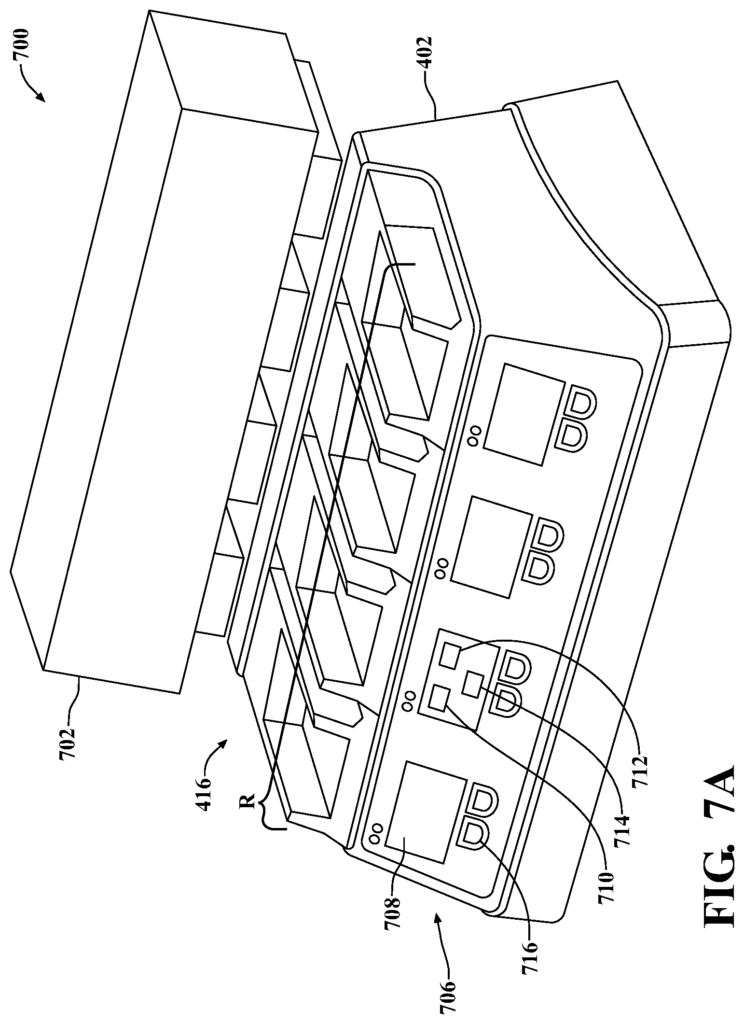
FIG. The battery 30 is connected to a medical device that consumes power. As shown in Figure. The medical device in FIG. 2 is a powered surgery tool 50, also known as a handpiece for a procedure. In other embodiments of medical device 50, it may be a tethered headpiece or any other instrument that is powered by battery 30, and which can be used by medical professionals. This includes, but is not limited to, lights, cameras and microphones. In order to maintain consistency and clarity, the description of medical device 50 is generally made in reference to the powered surgery tool that is shown throughout the drawings. This is explained further below. The description of the components and features described in the present invention also applies to other medical devices.
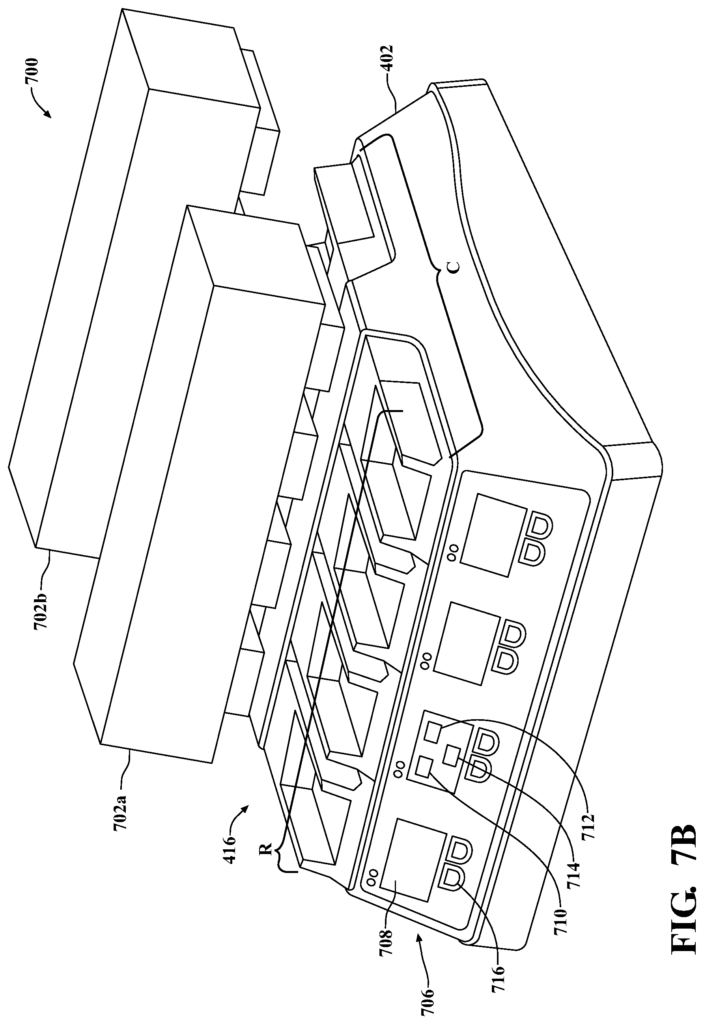
Click here to view the patent on Google Patents.
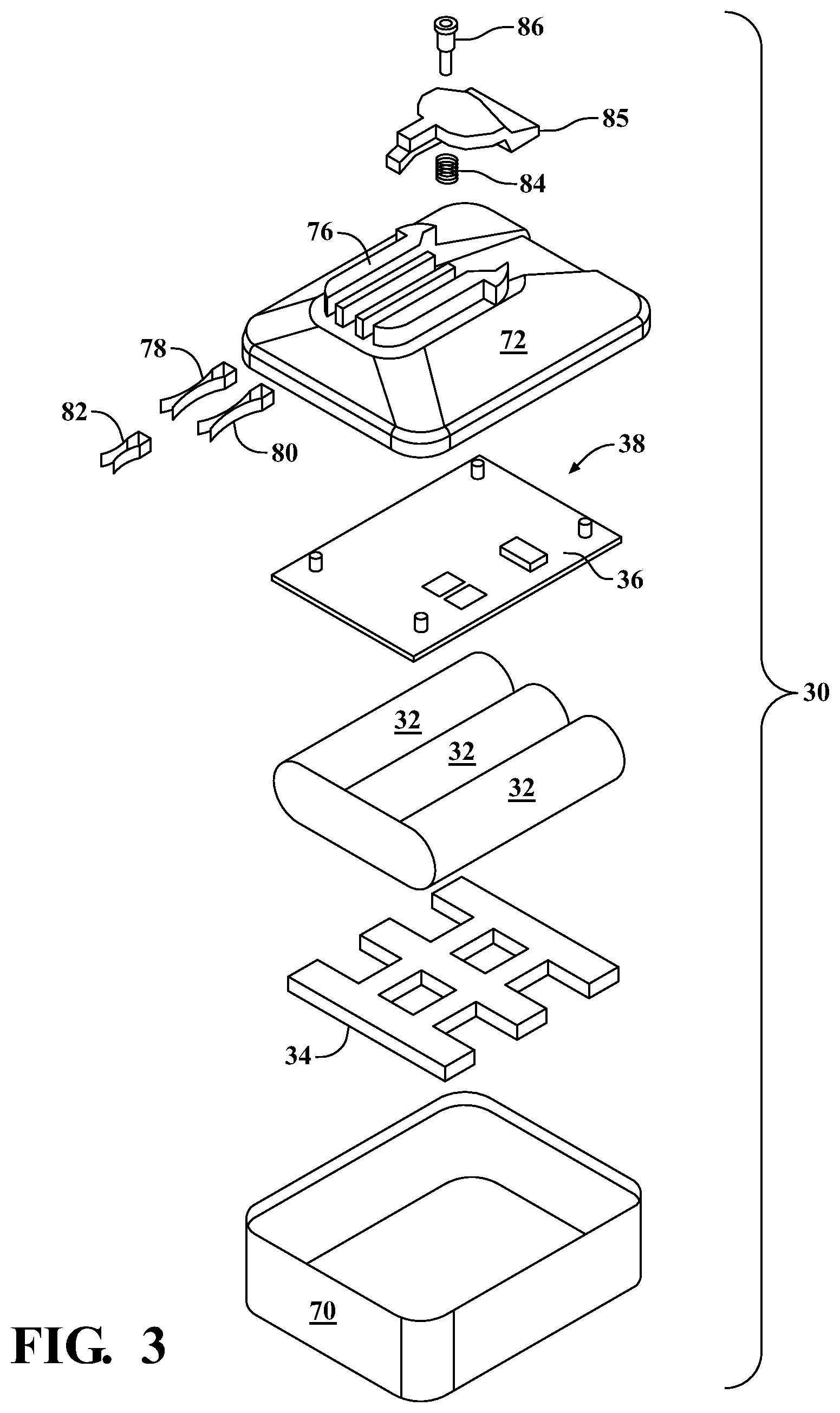
Leave a Reply